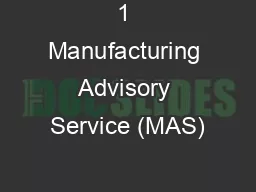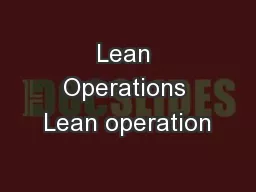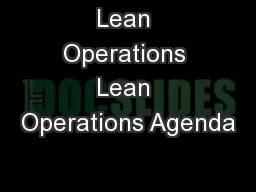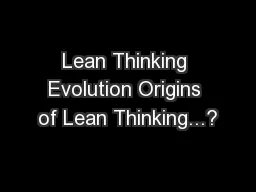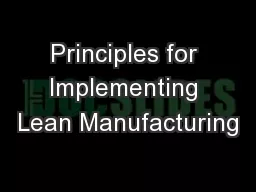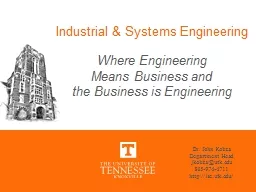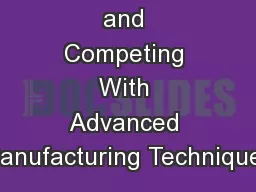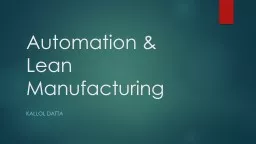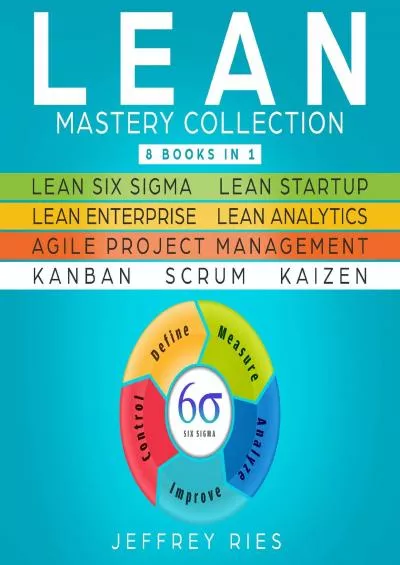PPT-Lean Manufacturing
Author : alida-meadow | Published Date : 2019-12-20
Lean Manufacturing amp Six Sigma MSE 401 Engineering amp Technology Management Professor Elias Group 2 Vision Aydzhan Salim Badr Saab Christopher Hovsepian Jing
Presentation Embed Code
Download Presentation
Download Presentation The PPT/PDF document "Lean Manufacturing" is the property of its rightful owner. Permission is granted to download and print the materials on this website for personal, non-commercial use only, and to display it on your personal computer provided you do not modify the materials and that you retain all copyright notices contained in the materials. By downloading content from our website, you accept the terms of this agreement.
Lean Manufacturing: Transcript
Download Rules Of Document
"Lean Manufacturing"The content belongs to its owner. You may download and print it for personal use, without modification, and keep all copyright notices. By downloading, you agree to these terms.
Related Documents





